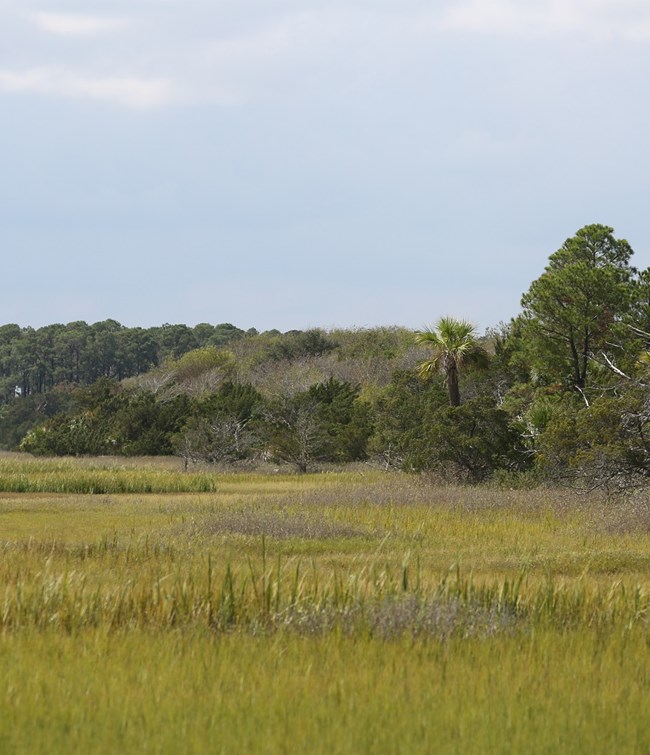
NPS Photo Maritime forests are surrounded by dunes on one side and salt marsh on the other. They act as a stabilizing force for the shoreline and a protective barrier for the salt marsh. The maritime forest habitat is ideal for mammals, birds, and reptiles to feed. Plants in a maritime forest have to adapt to constant exposure to salt conditions. Cabbage palms often signify a transition community from the marsh to the woody vegetation of the maritime forest. There may also be a steep increase in elevation with the forest sitting directly on the edge of the marsh. The maritime live oak forest is the dominant woodland community along the southern barrier islands of the Georgia coast. A variety of species are present in maritime forests such as live oak trees, red bay, yaupon holly, American holly, sparkleberry, wax myrtle, saw palmetto, vines, and Spanish moss, and larger species such as southern magnolia, water oak, laurel oak, cabbage palm, yellow poplar, sweetgum, red maple, tupelo, pignut hickory, and the non-native sycamore. Maritime forests have three levels, each home to different plants and animals that are adapted to survive in that particular level.CanopyThe canopy is the highest section of the maritime forest, dominated by live oak trees. Their branches are often covered with Spanish moss, resurrection ferns, and different types of fungus. The canopy gets the most sunlight as well as the most exposure to salt air, resulting in stunted tree growth. Branches grow outward rather than upward creating a dense canopy, a process called salt-pruning. Insects, squirrels, and various migratory birds find habitat in the canopy UnderstoryThe understory is connected to the canopy by vines such as grape, poison ivy, crossvine, and Virginia creeper. More shade-tolerant plant species are found here due to the dense canopy above. These plants create an abundant source of food for animals like white-tailed deer and birds. The understory can grow to be extremely dense, providing camouflage for its residents. Ground FloorThe ground floor of the maritime forest supports both the canopy and the understory and recycles forest nutrients. Limbs and other dead wood are decomposed by insects and wood borers. Mold and bacteria break down leaves and dead animals. Wildlife, including armadillos, keep the soil overturned in their search for insects, allowing decomposers to work more efficiently. The nutrients are then returned to the soil and utilized by the plants. Water leaches nutrients from the well-drained, sandy soil. A shallow layer of nutrients causes many plants to have shallow, spreading root systems. |
Last updated: July 29, 2025
